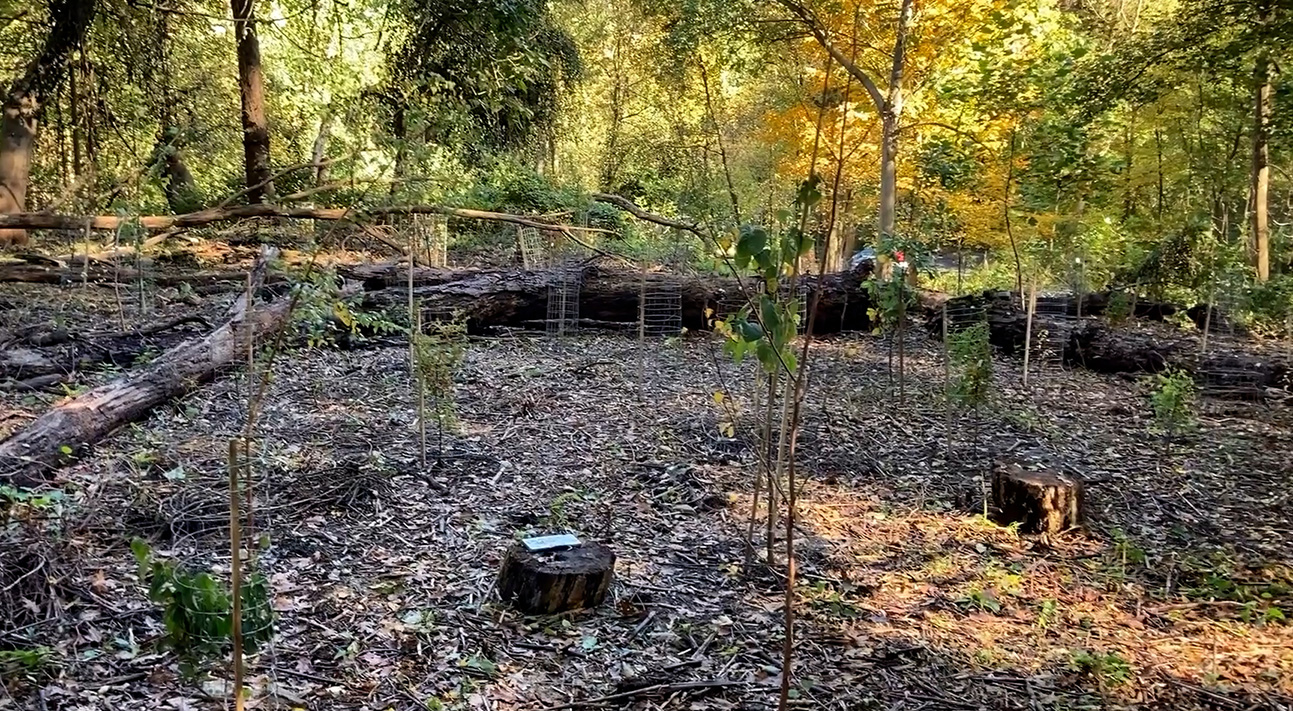
Above: The AFTER PLANTING picture (note the large stump for reference). 50 plants and trees went into the ground in an area previously covered in invasive japanese knotweed.
Below: The BEFORE picture. Volunteers take a break from removing the massive stands of japanese knotweed.
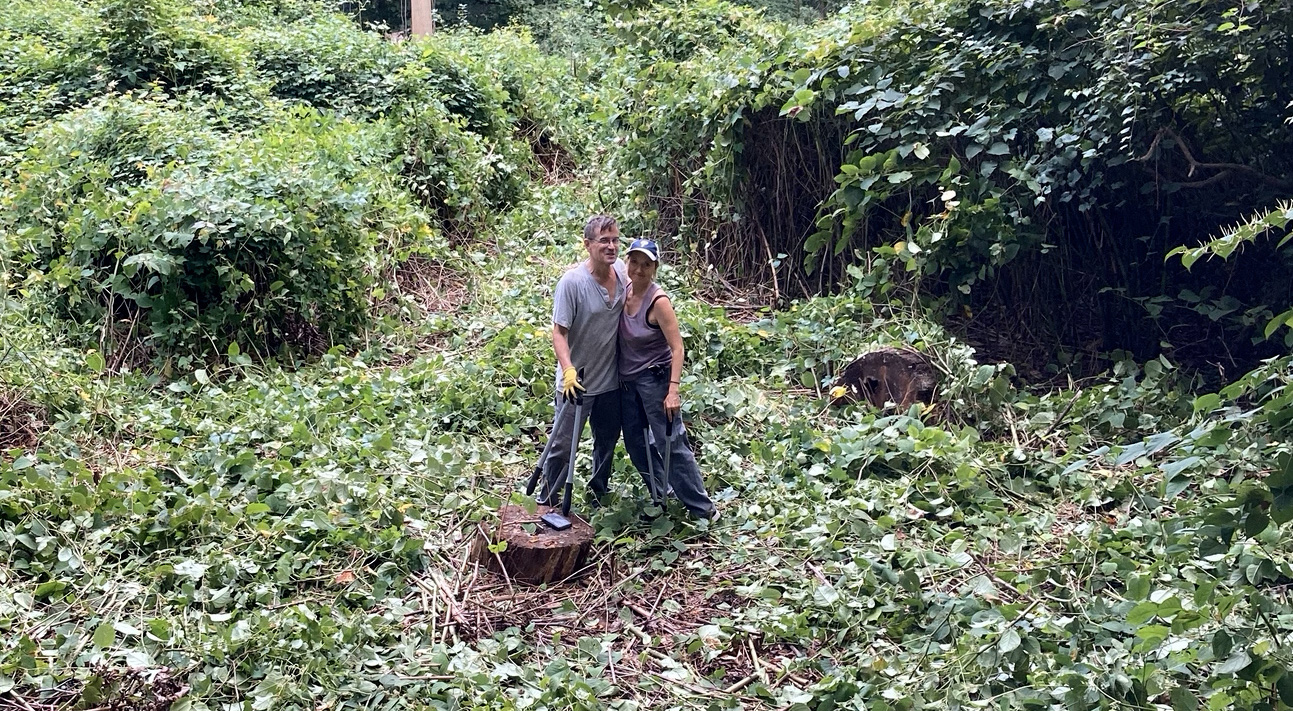
The Sam Ozer Memorial Project is one of WRV’s newest restoration sites. In October 2020 volunteers began to clear invasive exotic plants from a new site along the trail between Historic Rittenhousetown and Blue Bell. Now, in an area that had once been blanketed by a dense monoculture of Japanese knotweed, a small forest – Sam’s Forest – is beginning to grow.
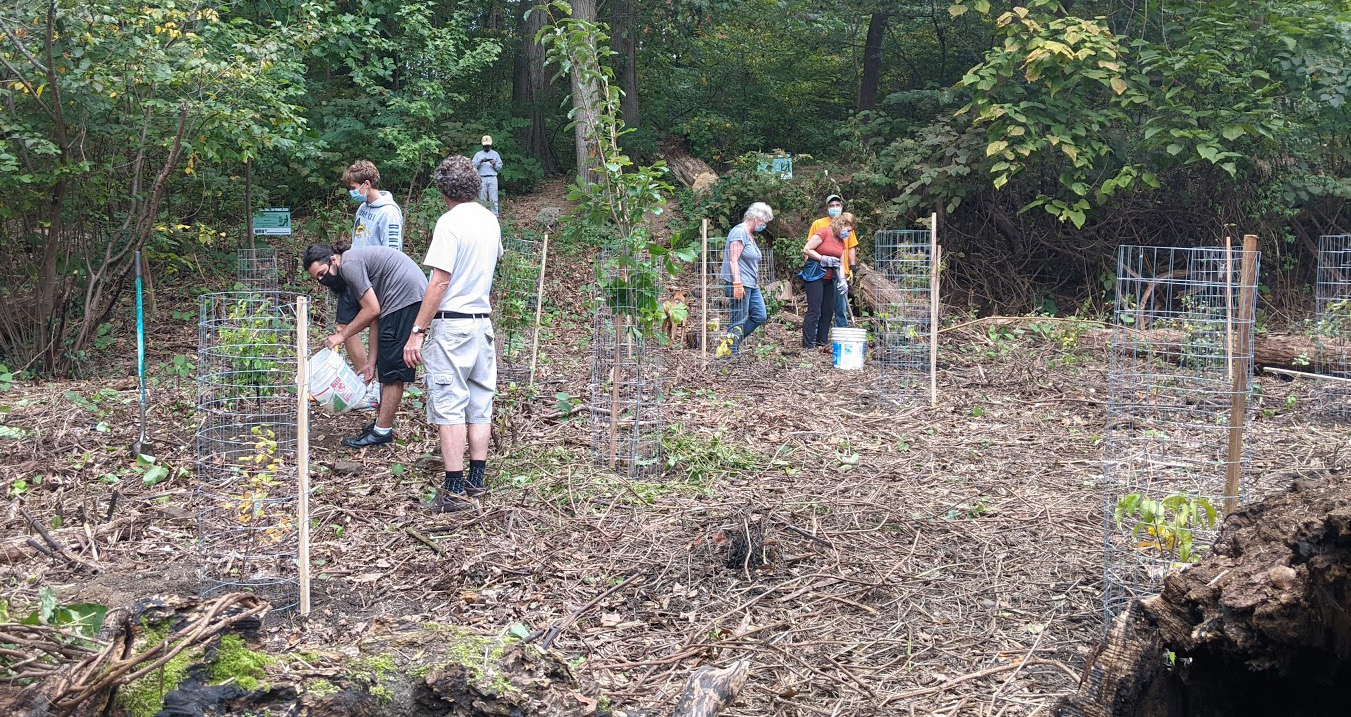
This used to be a dense thicket of Japanese knotweed.
After clearing the area of Japanese knotweed, volunteers planted a variety of native plants including fast-growing, shade intolerant trees (bigtooth aspen and gray birch), shade tolerant trees (pin oak, chestnut oak, hackberry, sweet birch, and American basswood), and trees and shrubs which will form a persistent understory (pawpaw, American hornbeam, witch-hazel, American elderberry, shadbush, and arrowwood viburnum).
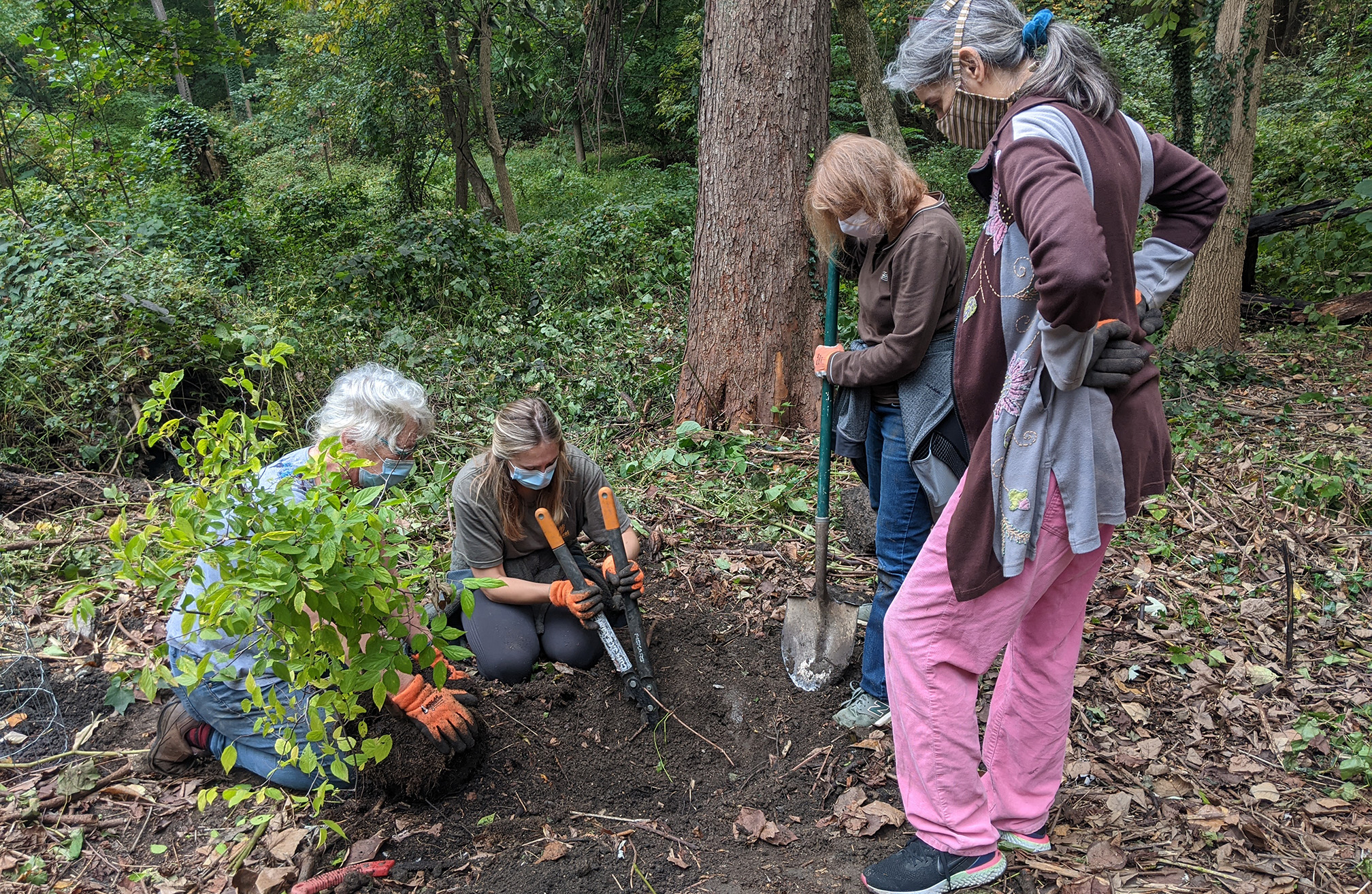
Volunteers replaced the Japanese knotweed monoculture with a diverse mix of native trees and shrubs.
Of course, this is only the beginning for the Sam Ozer Memorial Project. Over 150 trees and shrubs have been planted so far, and they will intense pressure from Japanese knotweed, porcelain berry, and other invasive exotic plants. WRV volunteers will be working to protect and maintain the native plants on this site for years to come.
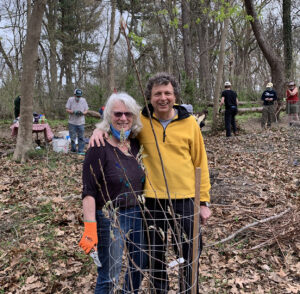
Mindy Maslin and Sid Ozer with one of the new trees planted for the Sam Ozer Memorial Project.
We at WRV love it when we can align our restoration goals and our community goals and meet them both so beautifully, as with this wonderful project.
Thank you for reading! Please consider supporting our work. Your donation will help keep the Wissahickon green and diverse, and all donations are Tax deductible.

